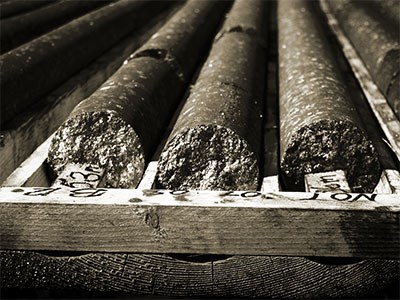The province’s billion-dollar promise to jump-start development in the Ring of Fire was not lost on the exploration companies operating in the James Bay region.
Earlier this week, the Wynne government announced it was earmarking $1 billion in its May 1 spring budget to develop transportation infrastructure to reach the Far North mineral exploration camp.
They challenged the federal government and Natural Resources Minster Greg Rickford to provide matching dollars on this “next great mining development” for Canada.
“There’s an element of politics involved for sure, but ultimately no infrastructure gets built without funding,” said Alan Coutts, president and CEO of Noront Resources.
He called the funding a “logical next step” that dovetails with the province’s creation of a Ring of Fire development corporation and the signing of a framework agreement with the Matawa chiefs to begin negotiating how development will unfold.
“I’m optimistic. It’s sending the right messages and that the provincial government is prepared to ante up to support it.”
The $1 billion would be pooled for future infrastructure spending by the proposed development corporation.
What that governing body would look like and how it would be run has been contracted out by the province to Deloitte Canada. The corporation and its as-of-yet unnamed stakeholders will decide the best access route.
The Ring’s three major mining proponents – Cliffs Natural Resources, KWG Resources and Noront – have all publicized plans for either road or rail corridors running north and south or east and west.
While some critics may question subsidizing the mining industry, Coutts said Noront is fully prepared to set aside $10 million a year for a possible toll road, be it north-south or Noront’s preferred option of an east-west route.
His company has tabled a $400-million road proposal running from north of Pickle Lake to its Eagle’s Nest nickel deposit, linking four First Nation communities along the way.
“At this point there’s only one proposal that’s advancing through the permitting stage and that’s our mine proposal with its east-west road,” said Coutts.
The company is projecting the Eagle’s Nest deposit as having an 11- to 20-year mine life. The mine capital construction costs are in the $700-million range.
“Rail is a possibility if there is a large bulk chromite deposit developed in the future,” said Coutts, “but in meantime a road is fine to service the nickel deposit for us and base metal deposits for other developers.”
Coutts said an access road would dramatically reduce the cost of exploration, attract more companies to the region, and “kick-start another round of activity that’s sorely needed.”
Moe Lavigne, KWG Resources’ vice-president of exploration and development, was largely unimpressed with the province’s move.
He said a monetary pledge and the signing of the Matawa agreement shouldn’t be construed as a milestone moment until Ottawa finally decides to come aboard as a partner and there is an agreed-upon infrastructure plan that passes muster with area First Nations.
“This billion dollars is not a commitment because they don’t have anything to spend it on. It’s really an empty gesture.”
His company is a 30 per cent stakeholder in the Big Daddy chromite deposit and is set to drill off its nearby Black Horse deposit this year.
But equally important, KWG has staked a vital north-south corridor that it’s advocating for the construction of a railroad.
“The chromite operations will not be economical without rail. It’s a no-go without rail,” said Lavigne. “You can’t haul the stuff out by truck and expect to make money.”
That’s the message the company is sending to Deloitte and that the Ontario Northland Transportation Commission (ONTC) has historically been the best development model out there.
He wants Queen’s Park and Ottawa to support a bond issue for the construction of the rail infrastructure.
“Just support it instead of dishing out taxpayer dollars and the investors will come. The investors aren’t interested now because there’s no plan.”
To what degree KWG will be involved in a Ring of Fire corporation remains to be seen, said Lavigne, but he suspects the Deloitte consultants “are scrambling to wrap their brains around this.”
Officials from Cliffs Natural Resources were unavailable for comment.
Federal Natural Resources Minister Greg Rickford was also unavailable, but in an emailed reply his staff said Ottawa is prepared to contribute money through a $53-billion infrastructure program if the province identifies the Ring of Fire as a priority project.
“Under the Building Canada Fund, the province is responsible for prioritizing projects they submit to our government.”
Coutts said Rickford has been clear that Ottawa will support mine development in the North providing it benefits isolated communities through all-season roads, power transmission lines and broadband connections.
“He was always clear on that condition and often said he would like to see a costed and scoped proposal, not just a pool of money, but a specific project that’s being advanced.
“I am counting on their support once they see that specific proposal and one that meets their needs.”




